Writing SEO Content: Everything You Need to Know
Whether you’re representing a brand that needs to compete in organic search, an affiliate marketer that needs to attract a crowd online, or a freelance writer that needs to offer greater value: being able to create online content that earns Google’s favor is crucial.
And it’s not the same as it was even a few years ago. SEO has evolved dramatically, which means marketers and content creators need to do the same.
Fortunately, all the changes have actually made SEO simpler and more straightforward. It’s not easy, but with a modern understanding of SEO and some top-notch writing skills, you can learn to write outstanding SEO content.
Profound Strategy’s team of SEO editors and writers routinely create SEO content that drives outstanding organic growth for clients. Send us a quick note to learn more about how we can support your internal content creation teams.
1. Conduct SEO Research Before Writing
Much of the success of a piece of SEO content relies on doing research prior to writing. Marketers should start by developing a list of keywords to help target their audience in organic search.
Using a keyword research tool will help find the keywords most relevant to an industry. But it’s important to note that keywords themselves aren’t terribly helpful; their real value is in what they represent—the user need.
A user need is a specific need that a user has, at a specific point in the buyer’s journey, that inspires an organic search query.
Determine which user needs are associated with a keyword, or group of keywords, by searching for that term and studying the resulting SERP. If most of the URLs on the SERP seem to be product pages, for instance, then clearly the people using that keyword are looking to buy whatever they’re searching for.
Be aware, though, that one keyword can be tied to multiple user needs, and one user need can be represented by many keywords.
For example, the keyword “data mining” could be associated with the following user needs:
What is data mining?
How does Facebook use data mining?
Learn about data mining techniques
So, creating content around the keyword “data mining” may, or may not, satisfy a particular user need.
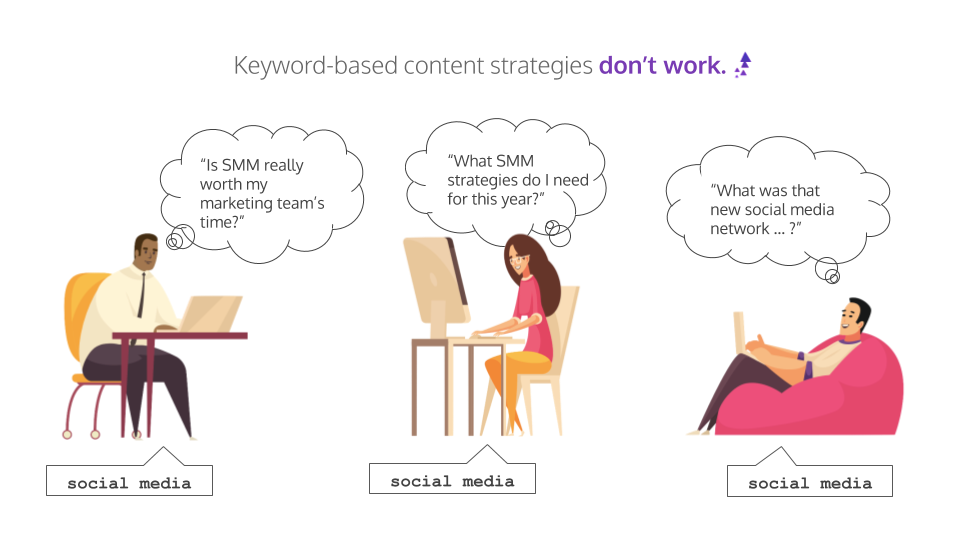
And the user need “learn about data mining techniques” has many keywords associated with it, including:
data mining
data mining techniques
data mining classification
data mining clustering
data mining regression
data mining prediction
Creating content around a particular user need will necessarily answer a question or satisfy a need that user has. That means that content based on a user need will often perform well and drive organic traffic for a long list of related keywords.
2. Analyze Your SEO Research
Carefully study the pages that Google serves up to satisfy a specific user need by Googling several of the highest-volume keywords and looking for pages that appear on most or all of the SERPs.
Take a look at what these pieces have in common, paying particular attention to factors like:
– Content length
– Headers and sub-headers
– Subtopics covered
– Images and other multimedia use
If these items are consistent across many top-ranking pieces, Google has likely determined that people care about them, so a smart marketer will too.
3. Make a Plan
Next, use the insights gained from analyzing top-ranking SERPs to create an outline. Take the subtopics, engagement elements, etc., that those pieces have in common and use them as a foundation.
Then, build on that foundation.
– Are there any gaps in coverage?
– Is there a new angle or unique thought leadership approach that can be incorporated?
– Is there an opportunity for the topic to be covered more thoroughly?
– What unique insights or value does your brand bring to the conversation?
This research-based framework will both ensure that content teams don’t leave out any information that addresses the user need, and help SEO professionals create content that’s truly competitive
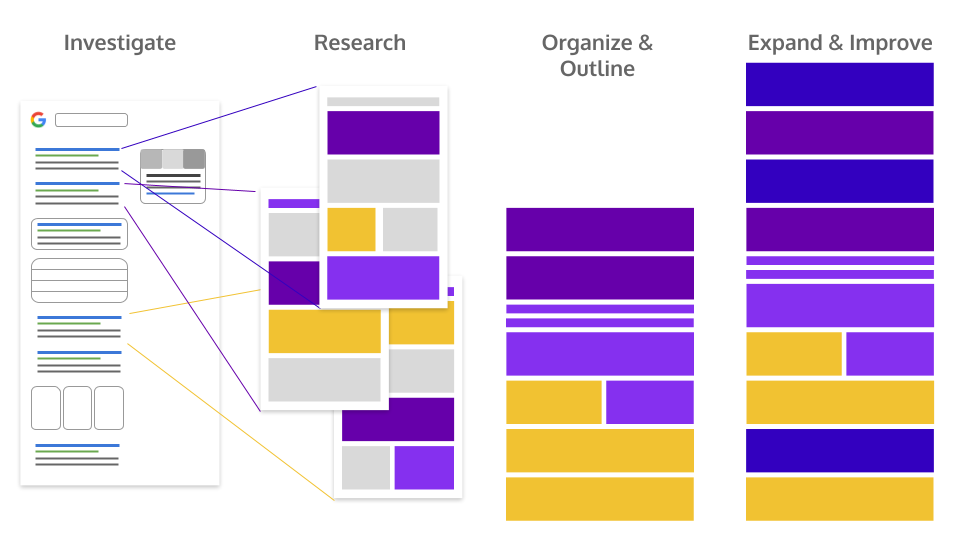
4. Write Better SEO Content
Finally, it’s time to write! While the process up to this point has been very technical, there is still room for brand personality and creativity. But remember, it’s all about creating the best experience for potential customers.
To ensure a great UX, content should not only incorporate traditional SEO factors like fast load times and relevant subheading titles, it should also display other hallmarks of great content.
These include:
– Short, easy-to-read paragraphs
– Responsive formatting and UX
– Clear definitions and solutions
Keep the target audience in mind and write for them first, not for search engines.
5. Write For a Targeted Audience
Research into a topic or term will help to clarify the audience in organic search. Making the most of that information is important.
Crafting content that caters to an audience better than the competition does will attract the attention of Google as well as users.
If the audience in organic search is looking for definitions and entry-level information, for example, don’t get into too many technical details. On the other hand, if research indicates that users are looking for deep, actionable instructions on a topic, don’t alienate them by defining the basic vocabulary.
6. Incorporate Keywords Strategically Naturally
Use keywords and related terms naturally. If a keyword feels forced into content, it probably is, and the content will not perform well in organic search.
There was a time when keyword stuffing was effective (although still annoying) for manipulating search engines, but those days are—thankfully—over. Users disengage, sending poor signals to search engines, and Google resists content stuffed with keywords.
It’s common practice to include keywords organically:
– In the title
– Within the first 300 words
– In one of the first subheadings
However, there are no steadfast rules for SEO keywords. As long as content stays on topic, there isn’t a need to mention the keyword if it seems out of place.
7. Organize and Structure Content Well
Keeping a piece of content organized is important for both the user and search engine. Start with an outline that addresses the most basic user need first, then discusses common subtopics, and then—if necessary—addresses details and unique perspectives.
As you structure the actual content:
Highlight important concepts or processes so that they stand out to the reader.
Use bullet points or numbered lists to organize the steps in a process or to break up walls of text to keep readers engaged.
Use H2 and H3 subheads to help the reader process through longer content.
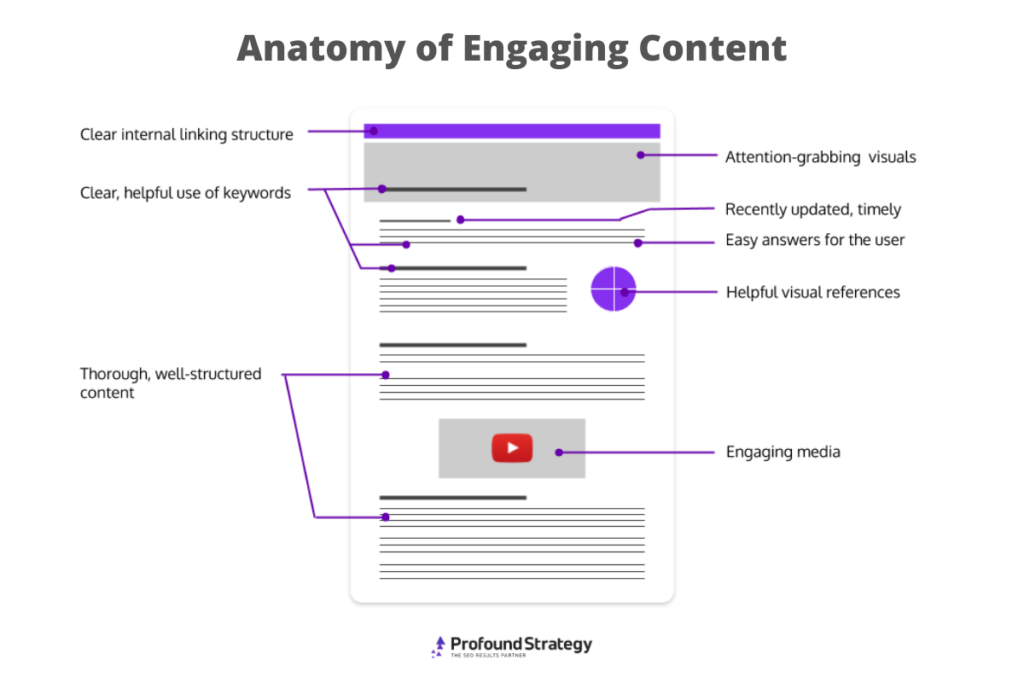
8. Optimize SEO Page Titles
A title should always address user need up front, since that tells them immediately they are in the right place. It should always be an accurate description of content.
Aim for titles between 50 and 60 characters to make sure the whole text will show up in Google’s organic snippets.
Examine the competition in organic search to see what is working well AND how to stand out. If the word “Best” appears in every search result, users are attracted to that idea, but don’t just be one more “best” if there are five already. Do something bigger, better, or unexpected to stand out.
9. Be Mindful of Length
Search engines tend to prioritize longer articles that engage well with users. Many high ranking SEO content pieces are over 1,000 words long, if not several thousand words long.
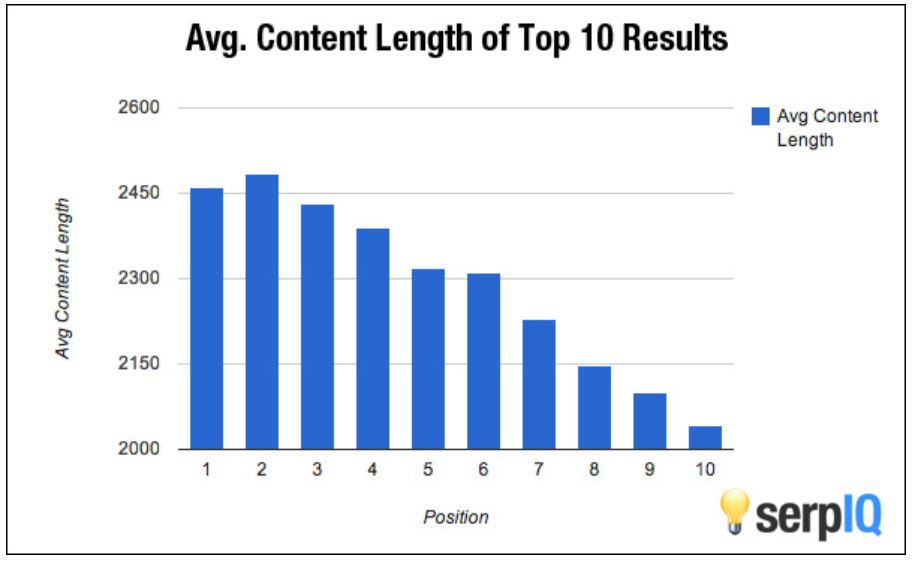
Long form content allows enough room to prove expertise by providing details that go beyond surface level, generic tips. When studying competing content, take note of word count. If most of the top performing content has a similar word count, that can be a clue that this factor affects ranking. If that’s the case, shoot for a word count roughly in the same range.
10. Monitor Analytics
Writing a good piece of SEO content is just one step of the process. The next is monitoring analytics.
Keeping an eye on a pages’ analytics (and making adjustments when necessary) will help keep SEO content relevant.
Once pages begin to earn traffic, it will be important to watch for growth opportunities. Analytics allows users to observe exactly how long a visitor spends on a website, bounce rate, pages per session, and more. Each of these factors helps to figure out whether or not users are finding what they need on a site.
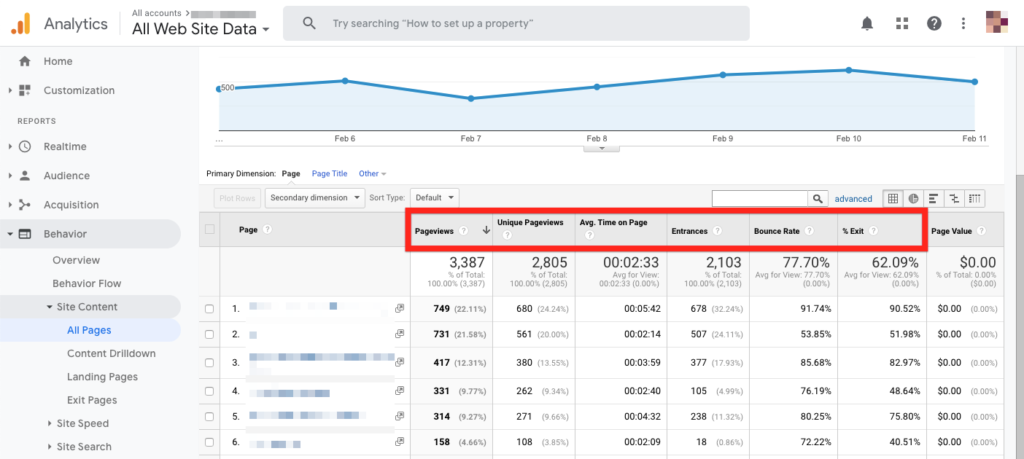
Analytics matter to search engines, too. Google takes these numbers into account when considering rankings.
For example, if a page has a high bounce rate, it’s worth finding out why. In many cases, a high bounce rate means the page is not optimized properly for the keywords it’s aiming for. In other cases, a high bounce rate can be caused by annoyances like pop ups, slow loading times, or poor page layout. These factors will be detrimental to ranking in Google’s search results.
11. Incorporate Imagery and Links if Needed
Visuals like images and embedded video can help improve UX and engagement, if they are done well. Try to include custom graphics—like diagrams, charts, and tables—that are unique to your brand, and helpful to the reader.
Stock photography can help break up big chunks of text to make content easier on the eyes, but Google knows that this isn’t valuable content.
Including internal and external links in the content also communicates value.
Internal links (links to other pages on the same domain) help search engines understand the organization and hierarchy of content on the site, as well as the content being linked to.
External links (links to other domains) are more valuable to the domains you choose to link to, but they can provide some value to your content. They communicate credibility by allowing users to verify information and by associating the content with other high-authority domains. (So never link to spammy, low-quality websites.)
Start Writing Better SEO Content
SEO is a bit of science, but it’s not a perfect one. As Google continues to evolve, the practice of SEO will change and evolve as well.
The one strategy that has always created SEO success—and will continue to do so into the future—is outstanding SEO content. The one piece of advice that Google never ceases to repeat is, “Create great content.”
For additional guidance towards writing SEO content, Profound Strategy’s ebook A Modern Guide to High-Impact SEO Content is a strong way to get started.
Of course, building SEO content is time consuming and requires serious time and effort to perfect. For this reason, it can be beneficial to hire an SEO partner to help do it right. If your company is ready to take the next step, then we’re ready to help you on the path to better SEO.